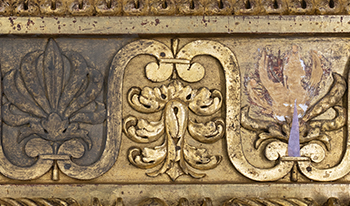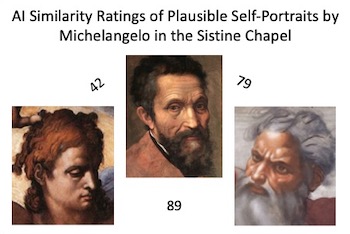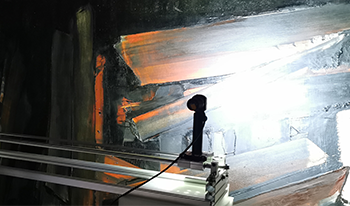
This paper will present the story of a collaborative project between the Imaging Department and the Paintings Conservation Department of the Metropolitan Museum of Art to use 3D imaging technology to restore missing and broken elements of an intricately carved giltwood frame from the late 18th century.

Three of the faces in Michelangelos Sistine Chapel frescos are recognized as portraits: his own sardonic self-portrait in the flayed skin held by St Bartholomew, itself a portrait of the scathing satirist Pietro Agostino, and the depiction of Mary as a portrait of his spiritual soulmate Vittoria Colonna. The first analysis was of the faces of the depictions of God and of the patriarch Jacob, which were rated by AI-based facial ratings as highly similar to each other and to a portrait of Michelangelo. A second set of young faces: Jesus, Adam and Sebastian, were also rated as highly similar to God and to each other. These ratings suggest that Michelangelo depicted himself as all these central figures in the Sistine Chapel frescoes. Similar ratings of several young women across the ceiling suggested that they were further portraits of Vittoria Colonna, and that she had posed for Michelangelo as a model for the Sistine Chapel personages in her younger years.

When one seeks to characterize the appearance of art paint-ings, color is the visual attribute that usually focuses most atten-tion: not only does color predominate in the reading of the pic-torial work, but it is also the attribute that we best know how to evaluate scientifically, thanks to spectrophotometers or imaging systems that have become portable and affordable, and thanks to the CIE color appearance models that allow us to convert the measured physical data into quantified visual values. However, for some modern paintings, the expression of the painter relies at least as much on gloss as on color; Pierre Soulages (1919-2022) is an exemplary case. This complicates considerably the characterization of the appearance of the paintings because the scientific definition of gloss, its link with measurable light quan-tities and the measurement of these light quantities over a whole painting are much less established than for color. This paper re-ports on the knowledge, challenges and difficulties of character-izing the gloss of painted works, by outlining the track of an im-aging system to achieve this.